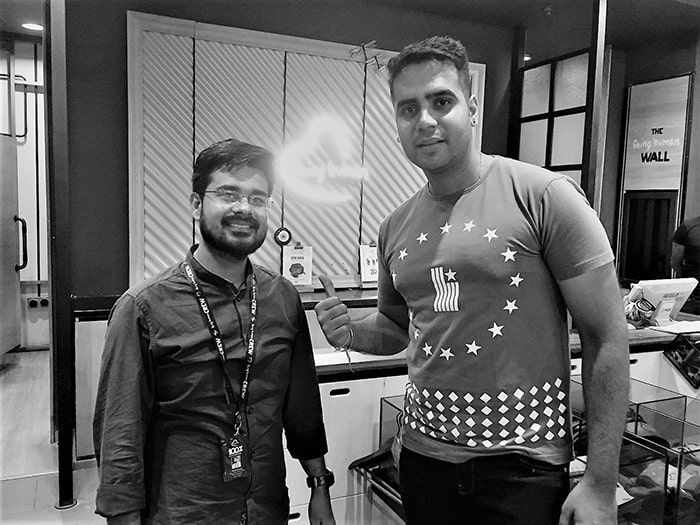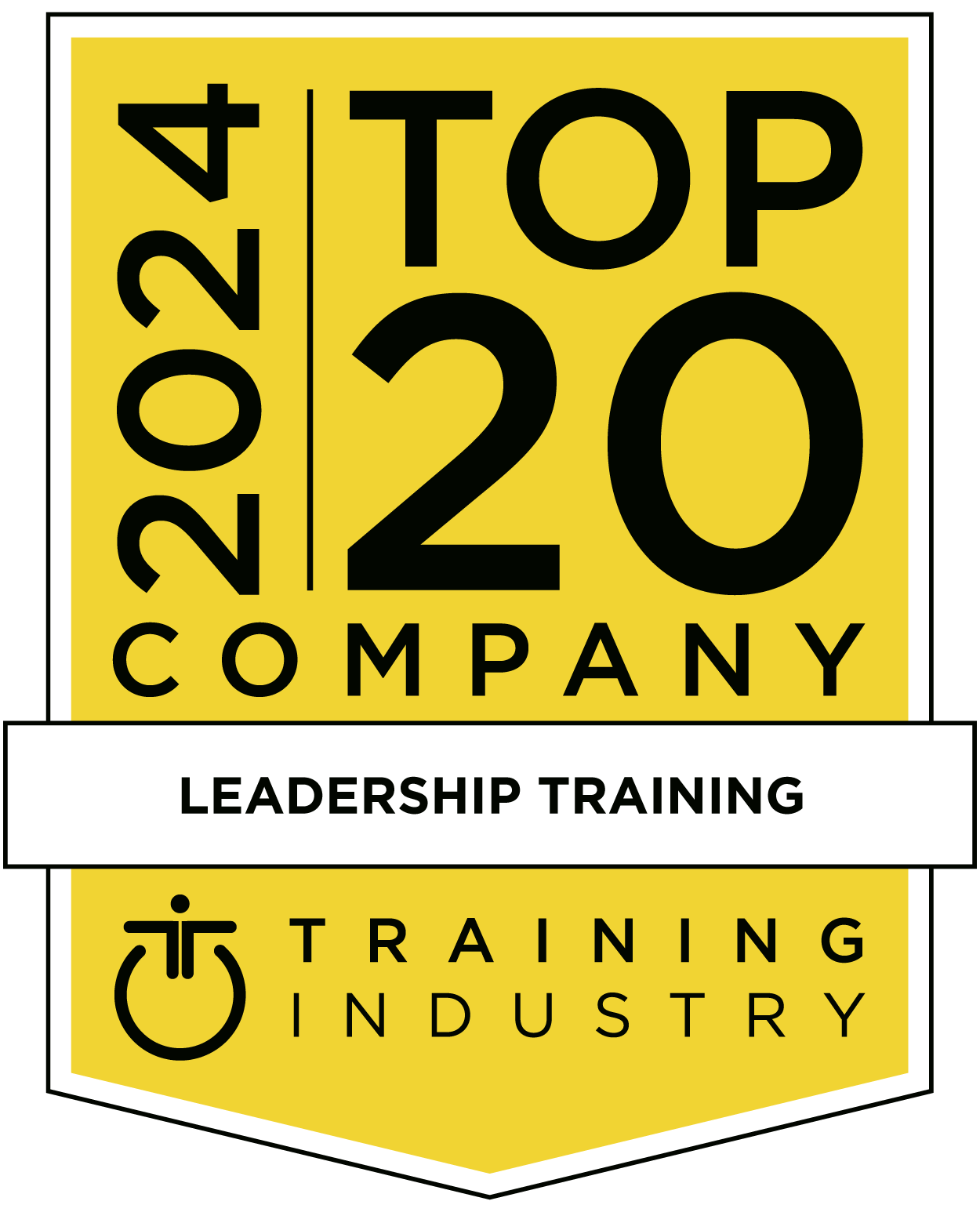Blog
Latest Updates

By Andre Alphonso
•
February 1, 2025
Creating trust and connecting to clients and prospects is an enduring and effective sales strategy. If your salespeople aren’t connecting with your clients and being viewed as trusted advisors, they’re likely to be losing business. Effective salespeople are able to move between initiating new ideas and responding to the needs of their client with agility and confidence. So how can your sales teams build trust, demonstrate confidence, and be flexible and agile at the same time? Storytelling. Storytelling is a powerful sales tool that can: Develop strong relationships Paint a clear picture of success for clients or prospects Facilitate the client making an emotional connection to your brand or service. Storytelling is a powerful tool for creating connection—neuroscience proves it! When humans listen to stories, the same areas of both the speaker’s and the lightener’s brain “light up”—even though one is producing information and the other is receiving it. This creates coherence and ensures that you and your listener are on the same page. Furthermore, when humans listen to engaging stories, our bodies release a neurochemical called oxytocin that’s associated with connectedness and trust. This boost in trust and empathy allows sales people to build stronger relationships with clients and prospects—a crucial aspect of sales.

By Andre Alphonso
•
January 1, 2025
When I was 19 years old I was madly in love with Sandra (Sandy) from afar. I eventually got the courage to ask Sandy out on a date, and to my complete amazement, she agreed. This was a high stakes situation for me and I wanted to impress. So on our first date I decided to pick her up from her parents’ home in a Mercedes Benz. No, it wasn’t my car, but belonged to the parents of my closest buddy at the time. And yes his parents were away overseas so the coast was clear. The first predicament I found myself in occurred early. Picking Sandy up from her parent’s home, her father opened the door to greet me and saw a shining red Mercedes Benz in his driveway. “Is that your car?” he asked. Being a naïve 19 year old I hadn’t considered being asked this question. How do I respond? Do I lie and say yes? Or do I show my hand as a complete fraud and fess up to the fact I borrowed it from a mate to impress Sandy and her parents? What did I do? We will come to that later. I guess I am no different to most other people who from an early age try and project themselves as something more than who and what they really are. We put on a mask to pretend to be someone or something else, perhaps to cover up our insecurities and vulnerabilities. Masks People Wear I am now older and wiser (arguably!) and I have come to learn that these masks we wear also appear in our corporate world. As a business leader, consultant and executive coach I interact with people at many levels. I frequently come across the various masks each person wears, trying to portray an image of something they may not really be. Masks that show ‘aggression’ or ‘funny’ or ‘indifference’ or ‘tough nut’ or ‘controlled’ among many others. As an example, a manager I was working with (Jamie) didn’t outwardly show his passion and excitement to his team. When we took a deeper dive as to the cause of this reluctance, we discovered he had developed a strong belief from previous managers that one should never bring emotions into work. He believed that expressing feelings undermines authority and was irrational. I’m sure you have heard people use that phrase “leave your feelings at the door”. Accordingly he had unconsciously built a persona at work as analytical and controlled, dispassionate and sometimes aloof. He took off this mask in a non-business situation. Whether with his family or friends, he was much more relaxed and where he was able to express feelings and his passion for many things. He laughed more. We came to the realisation that Jamie’s business persona – his mask – was actually holding back the engagement levels in his team. It was also causing him anxiety as he often felt constrained by this mask he chose to wear. Jamie slowly changed and discovered that by showing his real self – his sincere excitement and other emotions – made a huge difference in the climate in his team. One of Jamie’s direct reports said to me “We look to Jaimie as a gauge of how the business is tracking. Previously we didn’t think he was all that interested, but recently we are starting to see that he is backing this new product line and we are with him all the way – and probably for the first time since I’ve been working for him. The team is much more galvanised now that Jamie comes across more enthusiastic about things and that is rubbing off on all of us.” Additionally Jaime felt liberated that he had discovered a way to be his authentic self.

By Andre Alphonso
•
December 2, 2024
The leadership attributes of the likes of Steve Jobs, Arianna Huffington, Sir Richard Branson and numerous other famous business people have been sliced and diced, dissected and analysed innumerable times. While we all aspire to be like some of the greats, what can we learn from the everyday leader – these unknowns that don’t attract the attention of celebrity – who are making a significant difference in the lives of people who work for them? Let me share a personal story. Summer 2017. Ambience Mall, Gurgaon, India. A normal Saturday afternoon. My wife and I walk into a well-known retail clothing chain store. She is looking for an unusual t-shirt. One of the shop assistants sees us and approaches us as most shop assistants are programmed to do. He holds up a sign which is hanging on a lanyard around his neck, which indicates his name is Piyush and that he is deaf. He signals with his fingers that he can lip read. “This is most unusual” I think to myself as I have not experienced this in countless retail experiences. My wife says she is looking for a t-shirt, Piyush lip reads her message correctly and he walks her over to a rack of t-shirts and she selects a few to try on. She asks him where the change room is, and he shows her where. She proceeds to try on the t-shirts. As I wait for her to come out I observe something unusual. The manager of the store, who has just finished speaking to someone on the phone, starts conversing with Piyush. He is conversing in sign language and this goes on for a few minutes. They are obviously sharing something humorous as they are both laughing. The store manager is totally engrossed in the interaction. I am struck by the authenticity and goodwill that is present in this moment. The banter is broken by my wife who comes out of the change room wearing the first t-shirt. Piyush gives her the “thumbs-up” sign and asks my opinion, “looks great” I say and she goes back to try on another. Leadership Through Communication I observe the store manager who is now behind the cash register looking through some dockets. I walk up to him and we have the following exchange: Me: “I noticed that you were using sign language with your colleague.” Store Manager: “Yes sir. I was trying to sign. I am still learning.” Me: “How are you learning?” Store Manager: “I found a course through Google and I do some study and practice every evening after work.” Me: “Wow! That seems like quite an investment on your part.” Store Manager: “Well I’m learning something new.” Me: “So why do this? If Piyush can lip read, would you be able to get by without signing?” Store Manager: “Yes. We can get by and we have. But sir I want us to be able to have a two-way communication with him, not just one-way, from me to him. He is a smart guy and I want to hear his ideas and his opinions on how we can make things better in this store. I’m his manager so I also want to understand how he is doing and how I am doing as his manager.” I ask his name and he tells me it is Manick. I walk away as my wife has come out with another t-shirt, I give the second t-shirt a thumbs up and she goes back in to try on a third. As I wait, I reflect on the interaction I have just had with Manick. I continue to observe him as he goes about his work. He offers a job to an applicant who has come into the store and embraces her emotionally, not physically, as he welcomes her to the company and agrees a starting date. She is thrilled beyond words and genuinely excited. I observe him taking in everything that is going on in the store, jumping in to support his team when they are busy. I am most impressed with this guy as there is definitely an X-factor about him. In my experience with retail chains, shop assistants are generally not treated with the respect they deserve. Store managers generally don’t care about the opinions of shop assistants, nor care about how they may be doing as their manager. It is very obvious to me that Piyush enjoys working for Manick. From everything I can observe in the 15 minutes in the store, he is fully engaged as an employee and completely connected with his manager. Manick is different and I can see, hear, and feel that this X factor is his leadership and personal presence. The Pres Model In our work in Ariel Group , we have been working with leaders and professionals for over twenty five years to help them build their leadership and personal presence. We know from our experience with hundreds of thousands of leaders and professionals that presence is something that can be developed. Our purpose is to help leaders and professionals amplify their presence and show up as their very best selves. We deconstruct presence into four critical leadership skills which we call the PRES Model: Being Present: The ability to be completely in the moment, undistracted by anything past or future, sharp as a razor, and flexible enough to handle the unexpected. Reaching Out: The ability to build relationships with others through empathy, listening and authentic connection. Expressiveness: The ability to express feelings and emotions appropriately by using all available means – words/voice/face/body – to deliver one congruent message. Self-Knowing: The ability to accept yourself, to be authentic, and to reflect your values in your decisions and actions. Applying Presence To Leadership So in that moment of reflection about Manick and his presence as a leader, he ticks every one of these boxes. As an everyday leader I observe him: being Present – not pretentious Reaching Out – not looking down being Expressive – not trying to be impressive being Self-Knowing – not self-absorbed I have no doubt that with the right guidance, this young leader is destined to become someone significant affecting the lives of many. He can go far in his business and personal life if he chooses to do so. My wife comes out of the change rooms and she buys a couple of the t-shirts. I thank Manick and Piyush and ask them if I can take their picture. They are curious. I explain that I want to write a blog and I ask their permission. Manick signs something to Piyush. They both seem chuffed at the idea. They smile and agree. So here is the blog and in the photograph below, Piyush is on the left and Manick on the right. And if you are interested, the retail chain is called Being Human.

By Andre Alphonso
•
May 17, 2021
Told any good stories lately? No? Well you might want to start. Professionals often use stories to connect with the hearts and minds of their clients to influence action, and here we explain our formula for business storytelling. The Power of Storytelling A powerful communication tool, stories can: Capture attention Build trust and credibility Deliver messages and insights with impact Differentiate your team in an increasingly commoditised world. Business discussions and presentations can easily fall into facts-and-figures conversations. Stories present information in a format that makes it easier for the audience to receive, comprehend, and retain. At Ariel Group Australia , storytelling is a central leadership competence we develop in many of our courses and programs , not only because it connects messages to the head and the heart, but also because it is a powerful tool for building a relationship with the audience, whether an audience of one or many. The Ariel Formula for Business Storytelling 1. State The Business Context “We are meeting today to talk about the recent HR announcement …” 2. Segue To The Story “But before I do that, let me tell you a story.” 3. Tell The Story “As a student I…” 4. State What You Learned “What I learned from this experience…” 5. State What We Can Learn “What we can learn from this experience…” 6. Connect To The Business Challenge “So, as we face this challenging period…”

By Andre Alphonso
•
March 20, 2021
In my early career when in my late 20’s I was assigned a mentor/coach from within the organisation as part of my development as a leader. His name was Bruce. Bruce was in his 60’s, part of the Executive Team, a wise person, and a few years away from retirement. He took me under his wing and I became his project. Little did I know that his good storytelling would have such an enormous impact on my life. He suggested fortnightly catch-ups. At first I thought this was an overkill. Why did we need to meet this regularly? After the first month and a couple of meetings in, my fortnightly ‘catch-up’ with Bruce became a highlight for me. I found myself engrossed in our conversations and the time went too fast. I learnt an immense amount from Bruce which I still apply to this day some thirty-something years later. I have reflected over the years about the conversations with Bruce and what made them so effective and so memorable. I have tried to dissect what he did so I could learn from a master of influence. There were two things that Bruce did that I value to this day. The first thing was that he listened to me empathetically – really tried to put himself in my shoes. He was curious and asked great questions. The second thing he did was he shared his perspectives with stories. I was amazed how he managed to always have a memorable story to address every issue I was facing. As I look back now to these conversations 30 years ago, the reason they have stuck with me was the stories. Bruce’s stories, both professional and personal, was the vehicle he chose to deliver his wisdom. So here is my ingredients for passing on value to others, effecting change and enhancing your influence. First ‘listen with curiosity’ as this is the prerequisite needed and earns the right to then share a perspective. A perspective shared is necessary, but insufficient to cut through the noise and really be heard. Then use a story to deliver the perspective. A story without relevance or perspective is entertaining but of little value other than momentary entertainment. Combine Listening with Curiousity + Perspective delivered through a story and you begin to facilitate change between people, generations, workgroups and cultures. So here is my formula: Listen Curiously + Share Perspectives through Story = Enhanced Influence Bruce was a storyteller and it was a skill he had developed. If you want to increase your influence and impact professionally and personally, then you need to invest in building your storytelling skills.

By Andre Alphonso
•
February 4, 2021
Until 2020 when the COVID-19 pandemic forced employees in Australia out of workplaces, the ability to stay connected was something we took for granted. Remote work was considered an exception, or even a luxury, rather than the rule. Most management strategies still centred around ‘in-person’ management style, with regular personal contact with employees. However, the new ‘hybrid’ workforce has no doubt massively impacted your life and the lives of your people, and you now need to stay connected and lead from a distance. To help you navigate the new hybrid reality, we’ve put together a series of tips on how to lead remote and hybrid teams. This month we will focus on the importance of presence.



